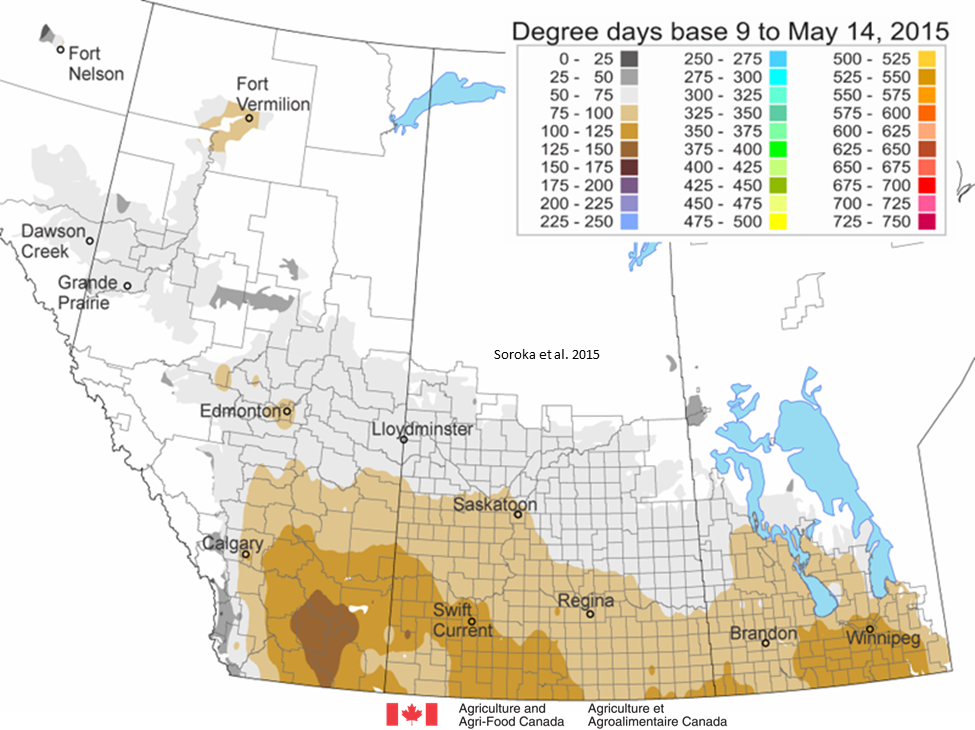Degree-day maps of base 9°C are now being produced by Soroka, Olfert, and Giffen (2015) using the Harcourt/North Dakota models predicting the development of Alfalfa weevil (Hypera postica) across the Canadian prairies. The model output is mapped below to help alfalfa growers time their in-field monitoring.
Watch this map for the predicted occurrence of second-instar alfalfa weevil larvae. The economic threshold for alfalfa weevil targets third- and fourth-instar larvae but, in the event that second-instar larval densities exceed either the forage or seed production thresholds, control is appropriate to prevent third-instar peaks.
 |
| Please contact julie.soroka@agr.gc.ca for information pertaining to this map. |
